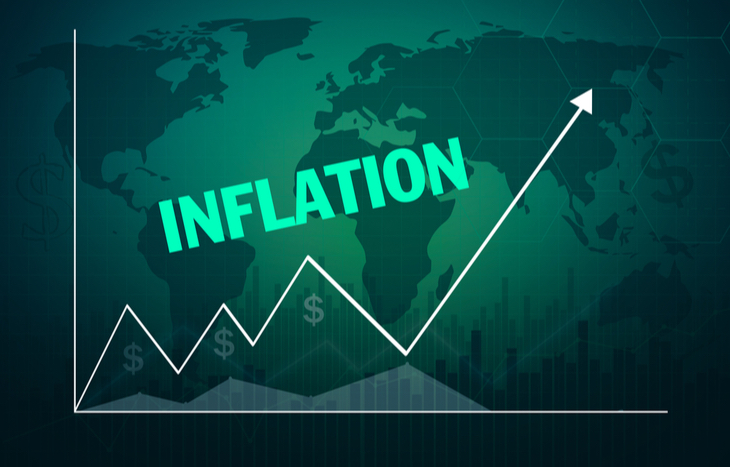5 Inflation Investment Opportunities for 2022
Inflation has emerged as the biggest buzzword of the COVID-19 pandemic and now, in year three, we’re beginning to feel the devastating effects of a devalued dollar. The Bureau of Labor and Statistics’ January Consumer Price Index (CPI) report pegged inflation at 7.5% before seasonal adjustment, confirming many people’s fears. Money just doesn’t have the value it did even a year or two ago.
The safeguard against inflation has and always will be to seek growth through investment. Whether they seek to pace it or beat it, individuals need to invest their money in vehicles capable of preserving its value. Here’s a look at the five best inflation investment opportunities for 2022.

1. Discount Brands and Essential Companies
While inflation might cause an exodus from securities as investors move their money into more conservative vehicles, that exodus creates opportunities for savvy investors. Look for companies poised to capitalize on inflation: namely, discount brands and retailers. It’s also smart to consider essential goods and services, and other “recession-proof” companies that see consistent demand regardless of macroeconomic forces.
Investors need only look at a one-year stock chart for companies like McDonalds (NYSE: MCD), Dollar Tree (NASDAQ: DLTR) or Costco (NASDAQ: COST) to see strong growth where competitors have traded sideways or at a loss due to inflationary concerns. The accessibility and value these brands provide will attract even more consumers as inflation problems persist.
In the realm of essential companies, defensive inflation plays can include companies in utilities, consumer essentials and healthcare. For example, Verizon (NYSE: VZ) not only pays a healthy dividend, the stock may see a boost from 5G rollout and interdependence from next-gen technologies. Likewise, Johnson & Johnson (NYSE: JNJ) continues to be a consumer staple with ties to healthcare.
2. Commodities, Including Precious Metals
Commodities tend to perform well in inflationary environments, largely because they’re the core drivers of economic abundance. The further upstream you invest, the more your investment is protected against volatility affecting currency values. As a result, oil, gold, natural gas, grain and other commodities are all worthwhile investments to explore if you’re gripped by inflation-related fears. And while most retail investors won’t invest in them directly, there are numerous commodity-focused ETFs to consider, including the iShares S&P GSCI Commodity-Indexed Trust ETF (GSG).
Many investors lean into precious metals in particular to hedge against inflation. In the current economic climate, this can provide double benefits, as many precious metals face shortages, driving value to new highs. Gold is at all-time highs, while metals like palladium continue to rise based on significant demand. Here again, ETFs provide the most accessibility.
3. Treasury Inflation Protected Securities (TIPS)
It’s right there in the name: Treasury Inflation Protected Securities. For investors with bond-heavy portfolios or income investments, allocating into TIPS is a consideration worth making as the United States accelerates past 7% in 2022. Because they’re indexed to inflation, TIPS are guaranteed to pay out at a rate that maintains the value of your investment dollars. It’s time to look at short-term laddering or barbell strategy to safeguard against near-term inflation.
It’s also important to note the potential of bond ETFs, specifically ETFs centered on TIPS. The Schwab U.S. TIPS ETF (SCHP) in particular has a strong history of performance and an extremely low 0.05% expense ratio. There are several other inflation-protected bond funds to consider. This includes the SPDR Bloomberg 1-10 Year TIPS ETF (TIPX) and the Vanguard Short-Term Inflation-Protected Sec Index ETF (VTIP).
4. Real Estate Investment Trusts (REITs)
Historically, real estate investment trusts (REITs) have performed well during periods of inflation. Because property rentals tend to increase to pace inflation, REITs maintain their income and dividend payments, which provides a stable stream of income to investors. According to the National Association of Real Estate Investment Trusts (NAREIT), “REIT dividends have outpaced inflation as measured by the Consumer Price Index in all but two of the last twenty years.”
Investors moving into REITs need to think beyond inflation in 2022. Consider investing in REITs with real estate portfolios relevant to inflation (and recession) protected activities. For instance, a broad healthcare REIT like Ventas (NYSE: VTR) includes senior housing, medical administration buildings, research facilities and more. As mentioned, medical services are largely protected against economic disruption, which can lend even more stability to a REIT investment.
5. Bitcoin and Other Established Cryptocurrencies
Bitcoin is down ~30% over the last year. However, inflation-conscious investors need to look beyond recent performance to realize Bitcoin’s potential. Bitcoin is up ~418% in the last two years, showing returns you’d love to see from a promising growth stock. Go back even further to Bitcoin’s inception and you’ll see a ~39,000% uptick over the life of the coin. It’s why companies like Tesla (NASDAQ: TSLA) and Block (NYSE: SQ) continue to allocate portions of their balance sheet to crypto.
The very nature of crypto means it does not tether to any fiat currency. For brave investors, Bitcoin can be an escape from profit-eating inflation that’s ravaging traditional investment portfolios. Best of all, it’s currently trading ~40% down from November 2021 all-time highs.
Investment is the Only Way to Beat Inflation
Now isn’t the time to have money on the sidelines. The value of the dollar depreciates under the stress of inflation. Therefore, it’s more important than ever to ensure your wealth keeps up with inflation: pacing it or, ideally, beating it. Explore the above investments in our current inflationary environment. Moreover, put your money in vehicles designed to weather the current turbulence and preserve your purchasing power.





